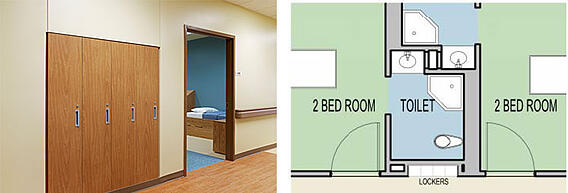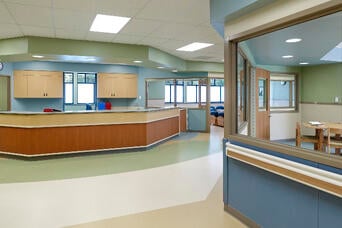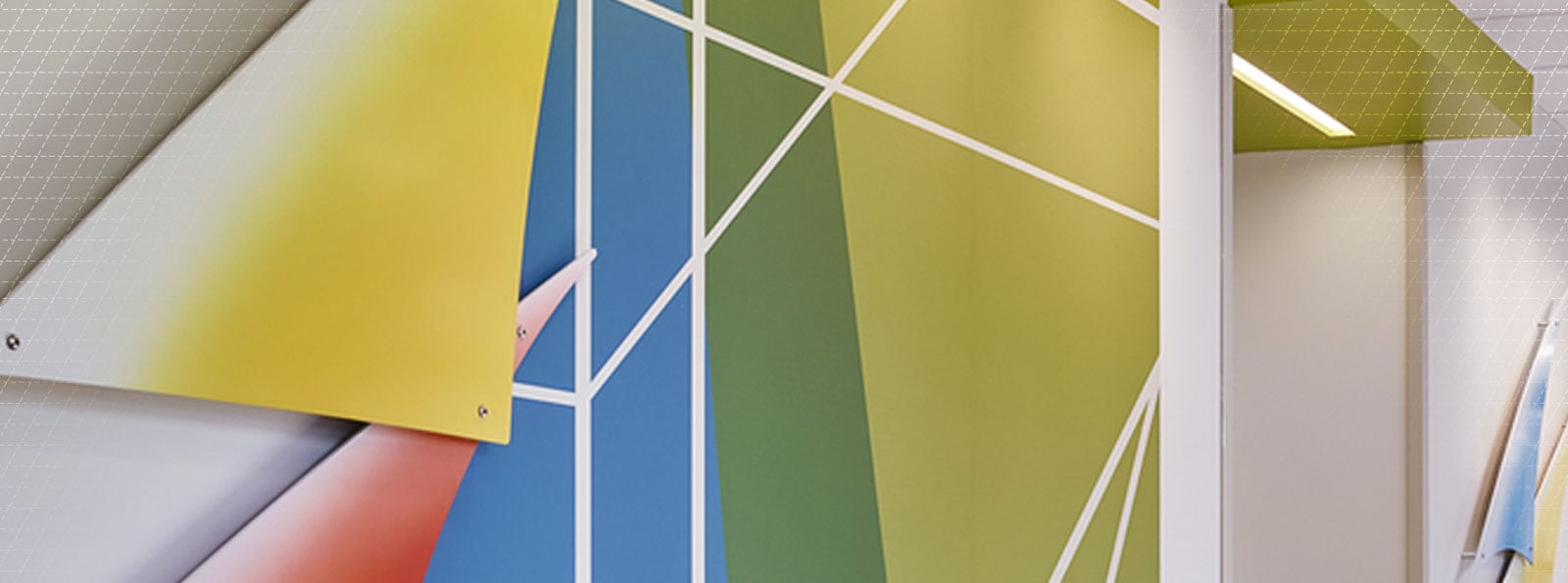Featured in Behavioral Healthcare, July 2014.
The design solutions for behavioral health facilities often requires unique innovations for common problems faced by caregivers on a daily basis. The best solutions are often the ones that are simple, elegant and, above all, durable.
Patient Belongings
A common problem we hear from our behavioral health clients is that patients come to the facility for treatment with luggage, knapsacks and a lot of their possessions. These items and other contraband must be stored somewhere within the facility and accessible to staff, but out of the patients’ reach. These items are often bulky and facilities often don't have adequate and accessible storage. Storage for patient belongings is often a luxury rather than a requirement for facilities that are out of space. Patient storage often gets relegated to the soiled utility room or a closet off the Unit, making it hard for the staff to track which items belong to which patients.
We often hear in design meetings that patients become fixated on their personal belongings or need to retrieve a forgot personal item, requiring staff to dedicate patient-care time to retrieving patient belongings..
While designing a facility in Delaware, the project designer came up with a solution that solved the staff’s issues, relieved some of the patients’ anxieties and utilized leftover space created by patient bathrooms nested between two semi-private rooms. We implemented locked storage lockers for personal belongings that are adjacent to the bedrooms, just outside the doors, so that the patients’ belongings are not far from reach or visibility.

When a patient arrives, their belongings are put into the storage locker and staff can show the patients their belongings to alleviate the stress caused by fixating on a bag or other personal items stored off-Unit. The lockers operate on the same key so staff only need to carry one key and the lockers themselves are made of durable resin panels that will absorb impact and are virtually indestructible. Since the lockers are in patient areas, the handles are ligature proof.
We have learned through the design of many activities spaces in behavioral health units that the television is often both a source of frustration and a source of incidents between patients vying to view ‘their program.’ The Entertainment Center can also be a source of normalcy and calming for patients. In either case, the television is an appliance that needs to be protected in an environment where the walls, furniture and other fixtures are the target of patient aggression . In order to protect the television in a recent behavior health project, the designer devised a custom cabinet that is flush with the wall and provides a plexiglass cover. The screen is almost invisible when the television is off.
Below the TV is locked cabinet for the storage of DVDs and games as well as protection of other TV components. The plexiglass cover and frame is hinged at the top and is secured at the base into the bottom cabinet with locks concealed in the lower cabinet. Keys are available to staff and maintenance personnel .
When designing such a cabinet, seeing the television is the primary design focus while hearing the television is often forgotten. We have seen many solutions that require holes to be drilled in the Plexiglas to allow patients to hear the television. In order to keep the Plexiglas shield a continuous barrier, we installed a ligature-safe ceiling-mounted speaker above the seating area, so that all the patients can hear, not just the ones closest to the TV. The TV cabinet, like the lockers, is made from a resin panel material which doesn't absorb moisture and is difficult to pick at the finished edges.

These solutions may seem simple and they are. It is often the simple details that can create large impact in the lives of patients and staff in behavior health facilities. Seemingly simple gestures like higher than normal ceilings and access to natural light can create spaces that begin to show a new attitude toward mental health treatment, much different than the bygone era of sanitariums and asylums. Use of natural materials and wood-like materials give facilities a residential feel and helps to reduce the stigma of mental hospitals of the past. Click here to link to Array's Behavioral Health Design Book, a portfolio of recent success stories.
Want more? Visit Array's video series on Behavioral Health design.


